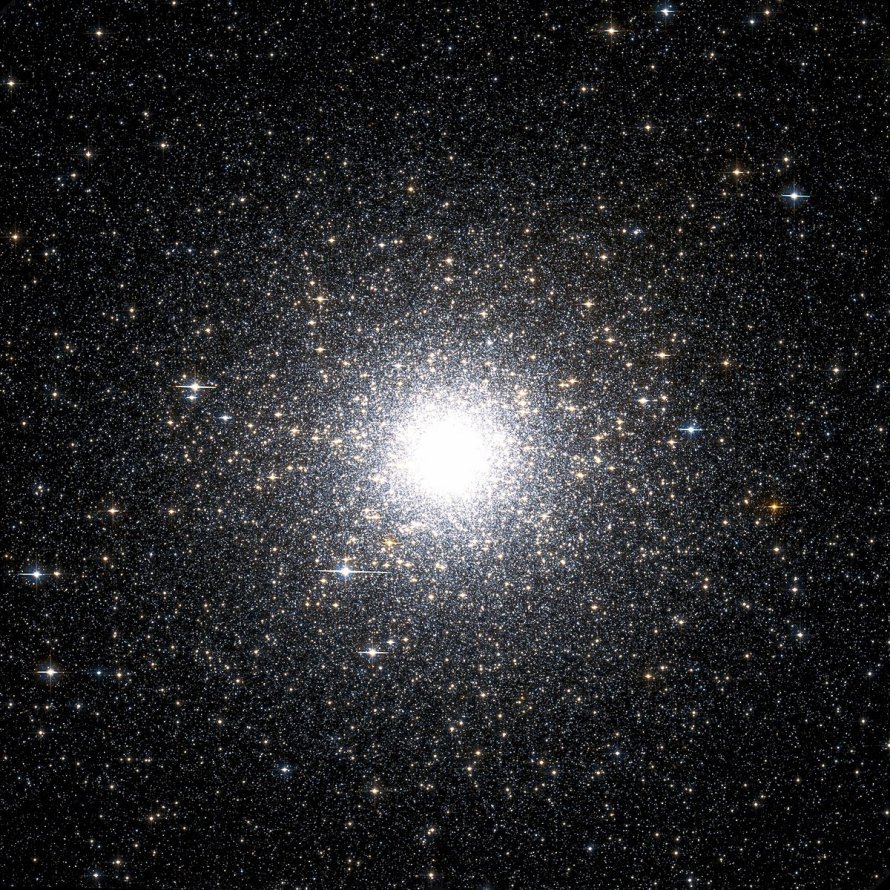M54 (NGC 6715)
Messier 54 (NGC 6715) is a globular cluster located in the constellation Sagittarius, in the Galactic Center of the Milky Way Galaxy in the Local Group of galaxies. M54 is 87400 light years away from Earth.
M54 is best viewed during late summer, is magnitude 8.4, and can be viewed with binoculars. M54 is 12' in apparent size. For reference, the full moon is 30'.
Observing difficulty: Intermediate
- Name:
- Type:
- globular cluster
- Constellation:
- Sagittarius
- NGC or IC:
- NGC 6715
- Magnitude:
- 8.4
- Viewing:
- binoculars
- Size:
- 12'
- Distance (light years):
- 87400 LY
- RA:
- 18h 55.1m
- Dec:
- -30 29'
- Season:
- late summer
- Milky Way location:
- Galactic Center
- Galaxy group:
- Local Group
- Messier Marathon #:
- 103
* The naked eye can see up to magnitude ~7-8 objects under ideal dark sky conditions.
A Cosmic Oddball in Sagittarius
In the vast sea of the Milky Way galaxy, deep-sky objects are celestial signposts that guide amateur and professional astronomers alike in their exploration of the cosmos. Among the fascinating catalogue of these objects listed by Charles Messier, the French astronomer, is Messier 54 (M54). This globular cluster, located in the constellation Sagittarius, offers unique insights into the structure of our galaxy and beyond. This article will delve into the scientific significance, the observational aspects, and the astrophysical characteristics of M54.
Historical Overview
Messier 54 was discovered by Charles Messier in 1778. Initially thought to belong to the Milky Way, it was classified in 1994 as part of the Sagittarius Dwarf Elliptical Galaxy (Sgr dE), a satellite galaxy of our own. This surprising revelation marked M54 as the first globular cluster discovered outside of our galaxy, providing a significant historical and scientific value.
Astrophysical Properties
With an estimated distance of around 87,000 light-years, M54 lies far beyond the galactic center. It is one of the densest globular clusters known, packed with stars in a tightly bound spherical structure about 150 light-years across. These factors make M54 an important astronomical object for studying extragalactic globular clusters and understanding the formation and evolution of galaxies.
Magnitude and Size
M54 has an apparent magnitude of about 7.6, making it invisible to the naked eye but easily observable through small telescopes and binoculars under ideal conditions. Its size appears to be around 12 arcminutes in diameter, equivalent to about one-third the apparent size of the full moon.
Scientific Significance
The identification of M54 as an extragalactic globular cluster has shed light on the process of galaxy formation and interaction. Its dense concentration and varied stellar populations provide valuable data for understanding the evolution of stars and the dynamics of dense star systems. Moreover, being part of the Sagittarius Dwarf Elliptical Galaxy, M54 offers a unique perspective into the study of this dwarf galaxy and its interaction with the Milky Way.
Locating and Observing M54
M54 is located in the constellation Sagittarius, the Archer, which is prominent in the summer sky for observers in the Northern Hemisphere and visible year-round for those in the Southern Hemisphere. It is positioned near the star Zeta Sagittarii, which forms the 'lid' of the Sagittarius's 'teapot' asterism. From there, M54 is located about 1.5 degrees to the east.
Although M54 is too faint to be seen with the naked eye, binoculars or small telescopes under dark skies reveal it as a hazy spot of light. With larger amateur telescopes, it appears as a slightly elongated, dense ball of light, but resolving individual stars is a task for large aperture telescopes and long-exposure photography due to its distance and high concentration of stars.



